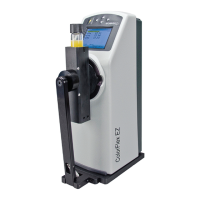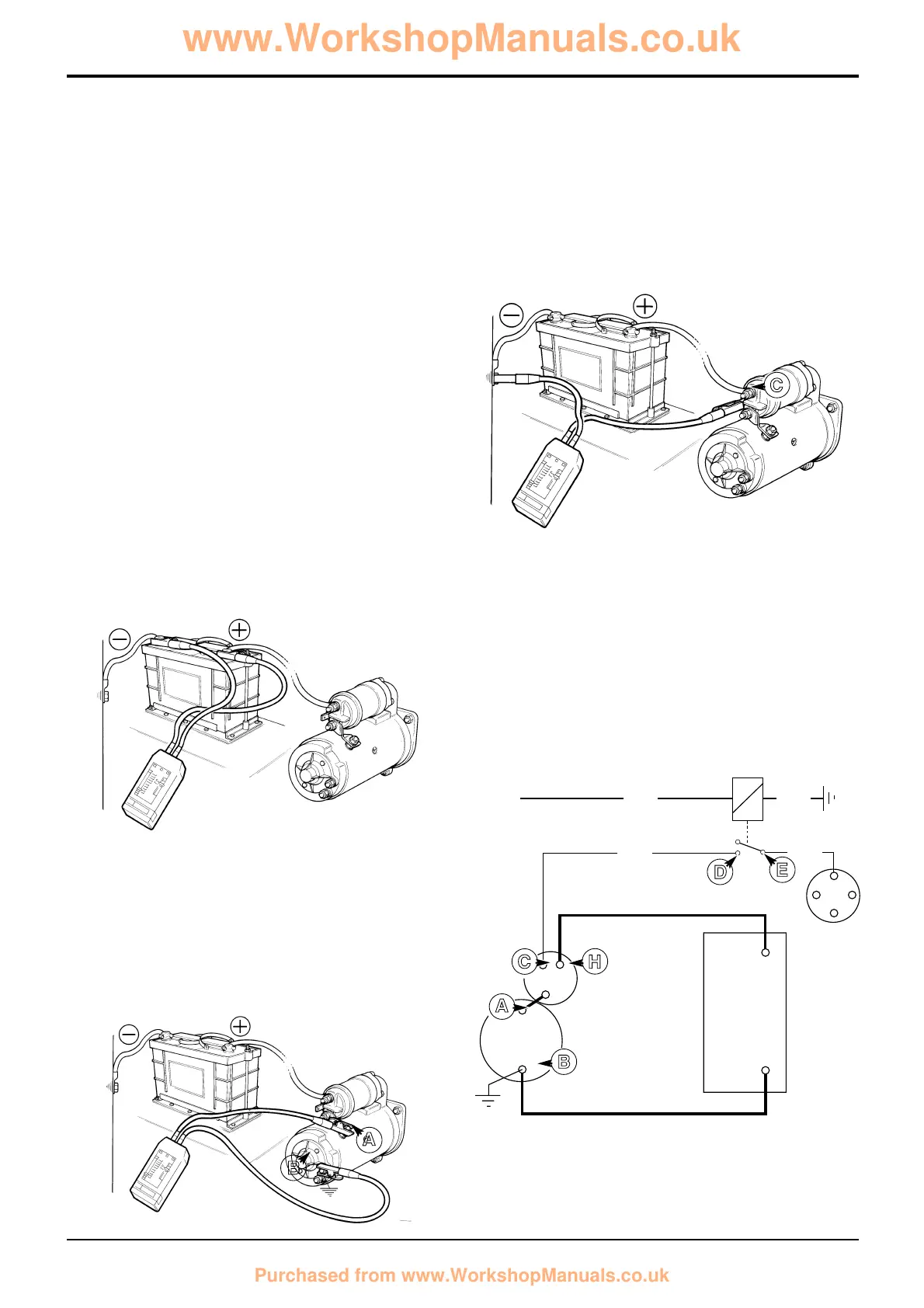Starter Motor
Starting Circuit Test
Before carrying out the voltmeter tests, check the battery
condition (see Battery Testing) and ensure that all
connections are clean and tight.
To prevent the engine starting during the tests ensure that
the engine stop fuse is removed, (refer to fuse identification
page).
Check the readings in the following sequence using a
voltmeter. Unless otherwise stated, the readings must be
taken with the starter switch held in the 'start' position ('HS')
and the transmission forward/reverse selector in neutral.
Note: Do not operate the starter motor for more than 20
seconds at one time. Let the starter motor cool for at least
two minutes between starts.
Test 1
Connect the voltmeter across the battery terminals. Reading
in 'start' position: 10.0V approximately. Minimum permissible
reading in 'start' position 9.5V.
A low reading probably indicates a fault in the starter motor.
Test 2
Connect the voltmeter between the starter main terminal A
and the commutator end bracket B. In the 'start' position,
the reading should not be more than 0.5V below the reading
obtained in Test 1. Minimum permissible reading in 'start'
position 9.0V.
If the reading is within this limit, continue to Test 3. If the
reading is outside the limit, proceed to Tests 4 and 5.
22 - 1
Test 3
Connect the voltmeter between the solenoid terminal C and
a good earth. Minimum permissible reading in 'start'
position: 8.0V.
Test 3a
If the reading is less than specified, connect the voltmeter
between the neutral start relay terminal D and earth. An
increase in reading to 8.0V indicates a fault in the wiring
from the start relay to the solenoid.
Section C Electrics
9803/3280
Section C
22 - 1
Issue 1
Service Procedures
S151030
S151000
S151010
A
B
C

